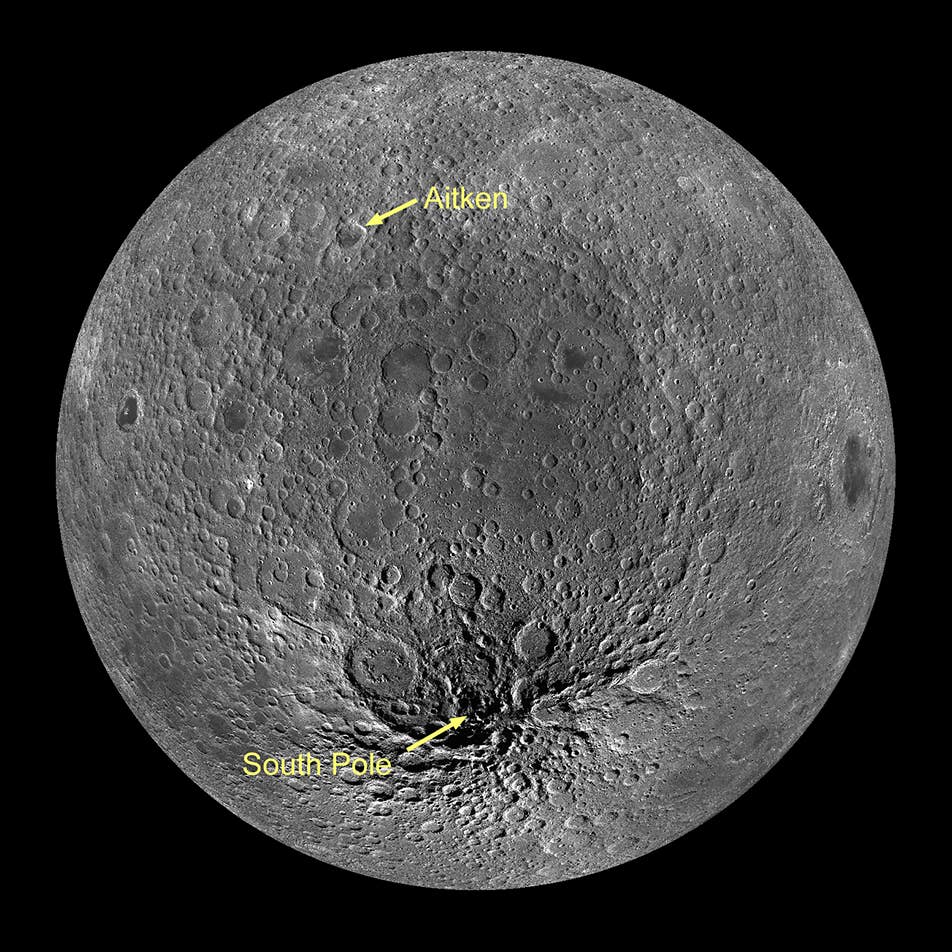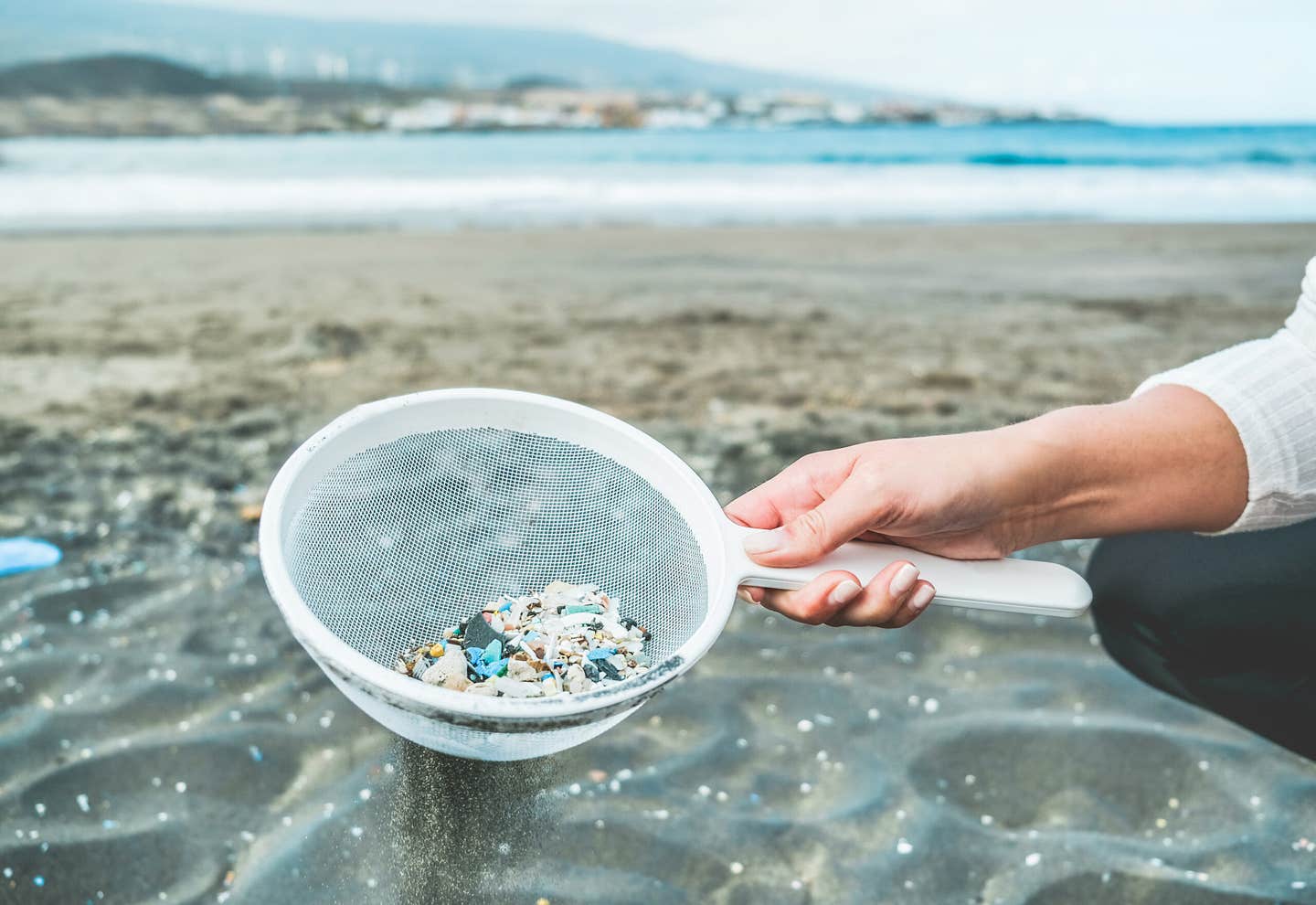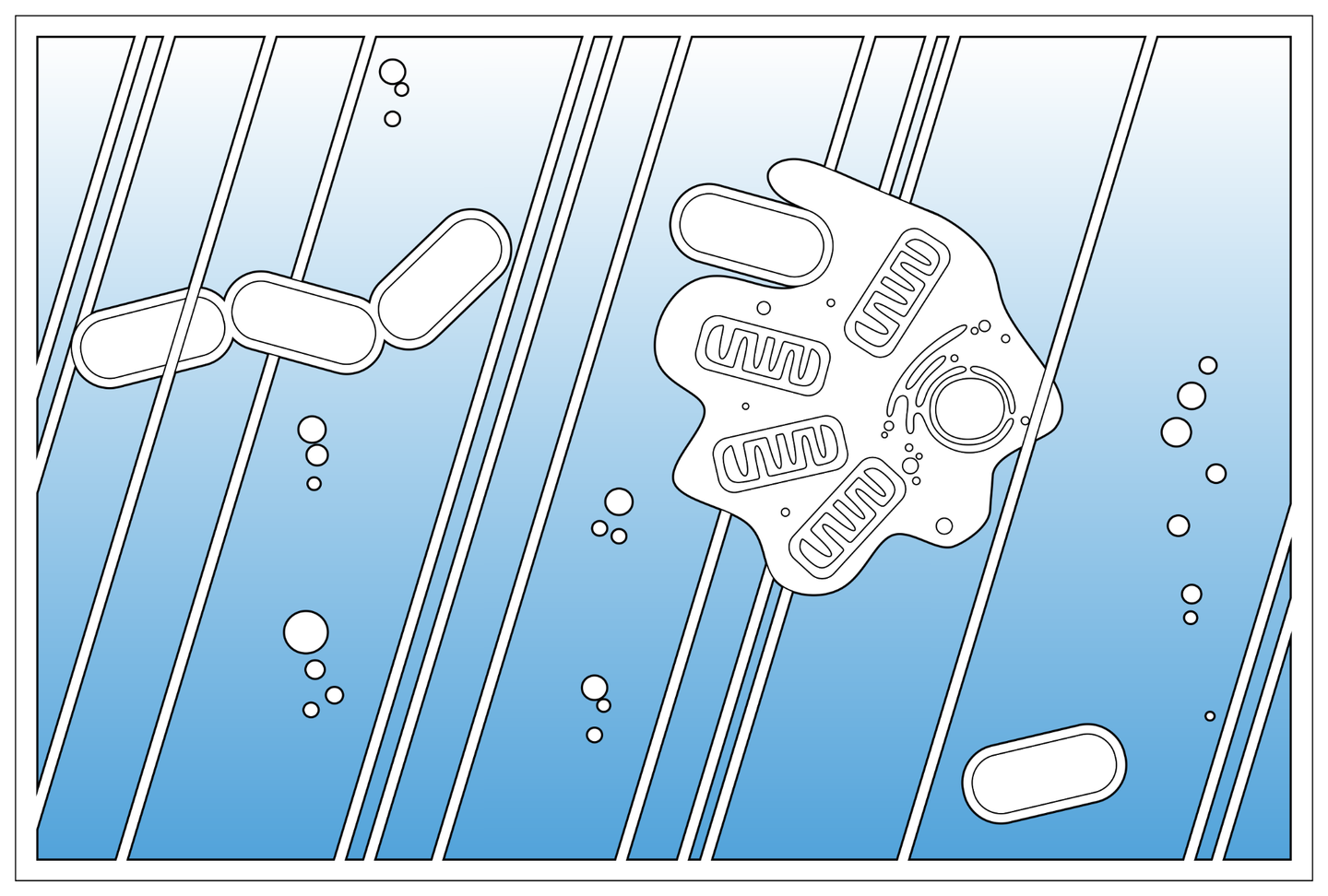Moon’s largest impact crater helps explain why the near side and far side look so different
New study shows the Moon’s biggest crater formed from a north-to-south strike, guiding Artemis to thorium-rich rocks near the south pole.

The Moon’s largest impact feature, the South Pole–Aitken basin, is so named because it stretches between Aitken crater and the south pole. (CREDIT: NASA/GSFC/Arizona State University)
As astronauts prepare for south-polar landings, a new look at the Moon’s biggest crater points to a pivotal moment in lunar history—and to the rocks you’ll want sampled next.
A study led by Jeffrey Andrews-Hanna of the University of Arizona tracks the path of the colossal impactor that carved the South Pole–Aitken (SPA) Basin and ties that strike to the final breaths of a global “magma ocean.” The result helps explain why the near side and far side look so different, and it maps the best places to dig for answers.
What the basin’s shape says about the impact
SPA is enormous—more than a thousand miles across—and ancient, dating to the earliest chapter of lunar time. Its outline is not round but tapered, like a teardrop. That geometry turns out to be a clue. By comparing SPA with other giant craters and by measuring how crustal thickness and elevation change around its rim, the team found the basin narrows to the south. In oblique impacts, the narrow, down-range end marks the direction the projectile traveled.
Translated: the impactor came from the north and plowed southward. The crust and topography confirm it. North of the basin, the crust thins quickly—about 0.16 kilometer per kilometer—while to the south the gradient is a gentle 0.016 kilometer per kilometer. Surface relief shows a similar split: roughly 0.018 kilometer per kilometer in the north and 0.003 in the south. The study quantifies the tapering with a factor, f, that runs about 0.16 ± 0.01 in gravity data and 0.18 ± 0.02 in topography for a south-directed blast, a better fit than a north-moving interpretation.
Those numbers matter because direction controls where deep material landed. The down-range side—the south—should be blanketed with debris dredged from far below the crust. That is exactly where Artemis landing zones cluster.
Reading the ashes of a magma ocean
Soon after the Moon formed, it likely wore a global shell of molten rock. As that ocean cooled, crystals settled to build the mantle and lighter minerals floated to form the crust. A late, syrup-like residue remained in pockets between them. Planetary scientists call that residue KREEP, short for potassium, rare-earth elements, phosphorus—and it often carries thorium. Think of a soda left in the freezer: ice forms first, while sugary liquid gets pushed aside and concentrated.
The study tackles a central question: How far along was that cooling when SPA formed? Modeling points to a very late stage—about 98.8% crystallized, with a likely range of 98.4% to 99.3%. By 99.90%, what remained averaged only 3.1 kilometers thick regionally, with local highs up to 14.4 kilometers beneath thin crust. At the moment SPA was blasted open, the last dregs of that liquid likely pooled under parts of the far side and especially beneath the thinner crust of the near side.
Thorium clues in the ejecta
If the impact tapped that residue, you should see its chemical fingerprints in the debris. You do. Typical far-side highlands sit around 0.95 ± 0.02 parts per million thorium. In SPA’s eastern ejecta, values hover near 1.17 ± 0.03 ppm. In the southwest—the down-range blanket—they climb to 1.79 ± 0.03 ppm. The basin floor is hotter still at about 2.78 ± 0.05 ppm.
Those patterns can’t be explained by mixing only crust and mantle. They require a third component: a thorium-rich, titanium-poor liquid—just what late magma-ocean residues supply. The result also supports a long-standing puzzle piece: the near side’s higher heat-producing elements, thinner crust, and abundant volcanic plains. As the far side’s crust thickened, the last liquids were squeezed toward regions with thinner roofs, like toothpaste in a tube. SPA then cut through a boundary where that residue lay patchy beneath the far side, exposing it along the basin’s southwestern rim.
Pinning the timing to early lunar history
Ages line up with that narrative. Samples and crater counts place SPA between about 4.31 and 4.39 billion years ago. Independent clocks tie the KREEP reservoir on the near side to roughly 4.34–4.37 billion years ago.
Put together, SPA likely formed tens of millions of years before the magma ocean fully froze. That timing means the giant impact struck a Moon still carrying thin layers of melt under its crust and then flung some of that material onto the surface, where future missions can reach it.
Why this changes how you plan a mission
Direction is destiny for sampling. Because the impactor traveled south, the down-range rim near the south pole should host thicker piles of deep-sourced ejecta. Many of NASA’s proposed Artemis III sites sit on that down-range fringe. “This means that the Artemis missions will be landing on the down-range rim of the basin – the best place to study the largest and oldest impact basin on the moon, where most of the ejecta, material from deep within the moon's interior, should be piled up,” Andrews-Hanna said.
Orbital instruments can flag thorium from orbit, but only chips in a lab can sort out how much residue mixed with crust and mantle, and when. As Andrews-Hanna put it, “With Artemis, we'll have samples to study here on Earth, and we will know exactly what they are. Our study shows that these samples may reveal even more about the early evolution of the moon than had been thought.”
What remains uncertain—and testable
Open questions persist. The exact age of SPA still spans tens of millions of years. The physics behind the near-side–far-side crustal split remains debated. Models of the magma ocean depend on how much melt stayed trapped and how elements like thorium partitioned as crystals grew. Those uncertainties are not roadblocks; they are targets. Each rock carried home from the down-range rim tightens the timeline, pins the chemistry to real minerals, and checks the models against nature.
The Moon’s record does not stand alone. Worlds like Mars, Mercury, and several large moons likely weathered both magma oceans and monster impacts. Understanding how an oblique strike punches through a still-warm interior on the Moon refines the playbook for reading those bodies, too. SPA becomes a template, not just a mystery.
Practical Implications of the Research
Targeted sampling: By pointing to a south-moving impact and a thorium-rich down-range rim, the study provides a clear roadmap for Artemis site selection and sample priorities, raising the odds that returned rocks capture the late magma-ocean stage.
Sharper lunar timeline: Laboratory dating of SPA ejecta can lock down when the magma ocean waned, tightening models of early Earth-Moon evolution that shape how you understand tides, days, and climate stability over geologic time.
Better models for other worlds: The framework for coupling impact geometry, crustal structure, and geochemistry extends to Mars and beyond, improving how you plan missions and interpret orbital data across the solar system.
Resource mapping: The same methods that map thorium can refine searches for other elements and for water-ice traps near the south pole, informing future habitat, power, and fuel strategies.
STEM momentum: Clear, testable predictions tied to upcoming missions offer a near-term payoff for students and early-career researchers, strengthening the pipeline that supports space exploration and technology spinoffs on Earth.
Research findings are available online in the journal Nature.
Related Stories
- Massive buried structure found under the Moon’s largest crater
- Astronomers weigh nuclear option to stop Moon-bound asteroid
- Astronomers discover new quasi-moon orbiting the Earth
Like these kind of feel good stories? Get The Brighter Side of News' newsletter.
Joshua Shavit
Science & Technology Writer and Editor
Joshua Shavit is a Los Angeles-based science and technology writer with a passion for exploring the breakthroughs shaping the future. As a co-founder of The Brighter Side of News, he focuses on positive and transformative advancements in AI, technology, physics, engineering, robotics and space science. Joshua is currently working towards a Bachelor of Science in Business and Industrial Engineering at the University of California, Berkeley. He combines his academic background with a talent for storytelling, making complex scientific discoveries engaging and accessible. His work highlights the innovators behind the ideas, bringing readers closer to the people driving progress.



